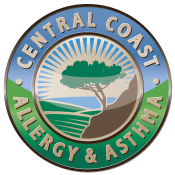Lamb’s quarter, Figures Chenopodium album, is a native of Eurasia, now naturalized throughout North America. Chenopodium has approximately 60 species, one-third found in America. The native American lamb’s quarter, C. berlandieri, is indistinguishable from C. album apart from subtleties of the seed coat. The former is more prevalent in the central and western states, and the latter in eastern. Lamb’s quarter variants range from coast to coast, from Canada to Mexico, and are found throughout Europe. Lamb’s quarter is found as an intruder of cultivated fields, in overgrazed lands, brush burns and logged openings, desert grasslands, and juniper-pine forests. Lamb’s quarter will grow at elevations from 100 to 9,500 feet, and is good livestock feed. Its leaves are used in salads, and boiled like spinach; it makes a good potherb. American Indians used the seeds to make dark flour for bread or gruel.
Lamb’s quarter is an annual plant, reproducing by seed, with a short, much-branched taproot, growing up to 6 feet. Leaves are alternate and very variable: lance-shaped to egg-shaped, to wedge-shaped, toothed, or smooth-edged. The leaves are white-mealy underneath. Nettleleaf lamb’s quarter, C. murale, is similar in appearance, but has larger leaves with more sharply toothed edges. Flowers are perfect, greenish-white, sessile, clustered on terminal spikes. Pollen anthesis occurs usually in July through September; in some areas it may begin in May or persist into November. Although considered a moderate pollen producer, in areas of greater prevalence in the United States, it can be a significant hay fever inducer. C. berlandieri is a significant producer of pollinosis in Canada.Lamb’s quarter is an important aeroallergen in mid-Europe, where 24 to 27% of hay fever sufferers are skin test positive to it. Lamb’s quarter has not been incriminated in asthma.
Adapted from: Annals of Allergy, Richard Weber, February 2003.
